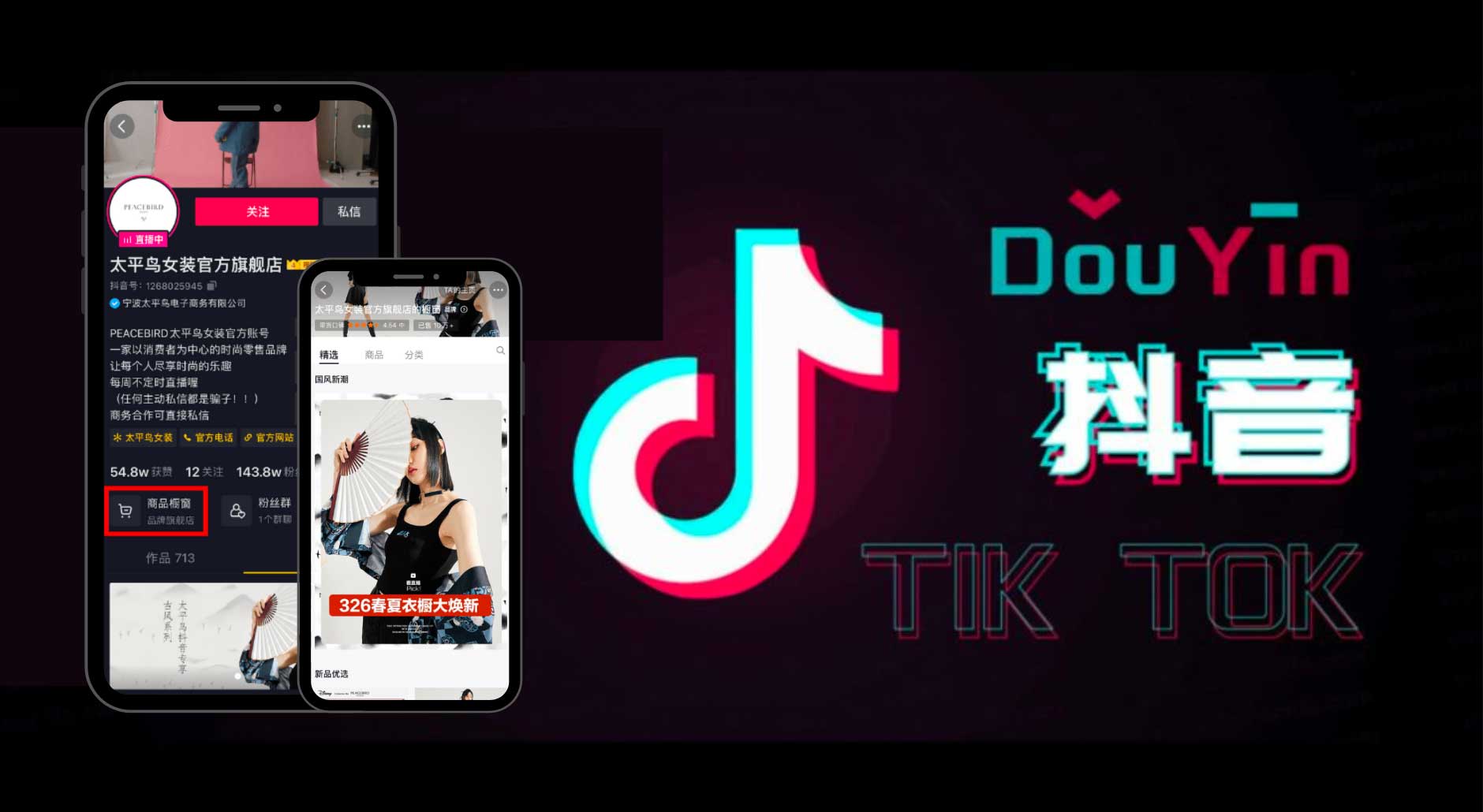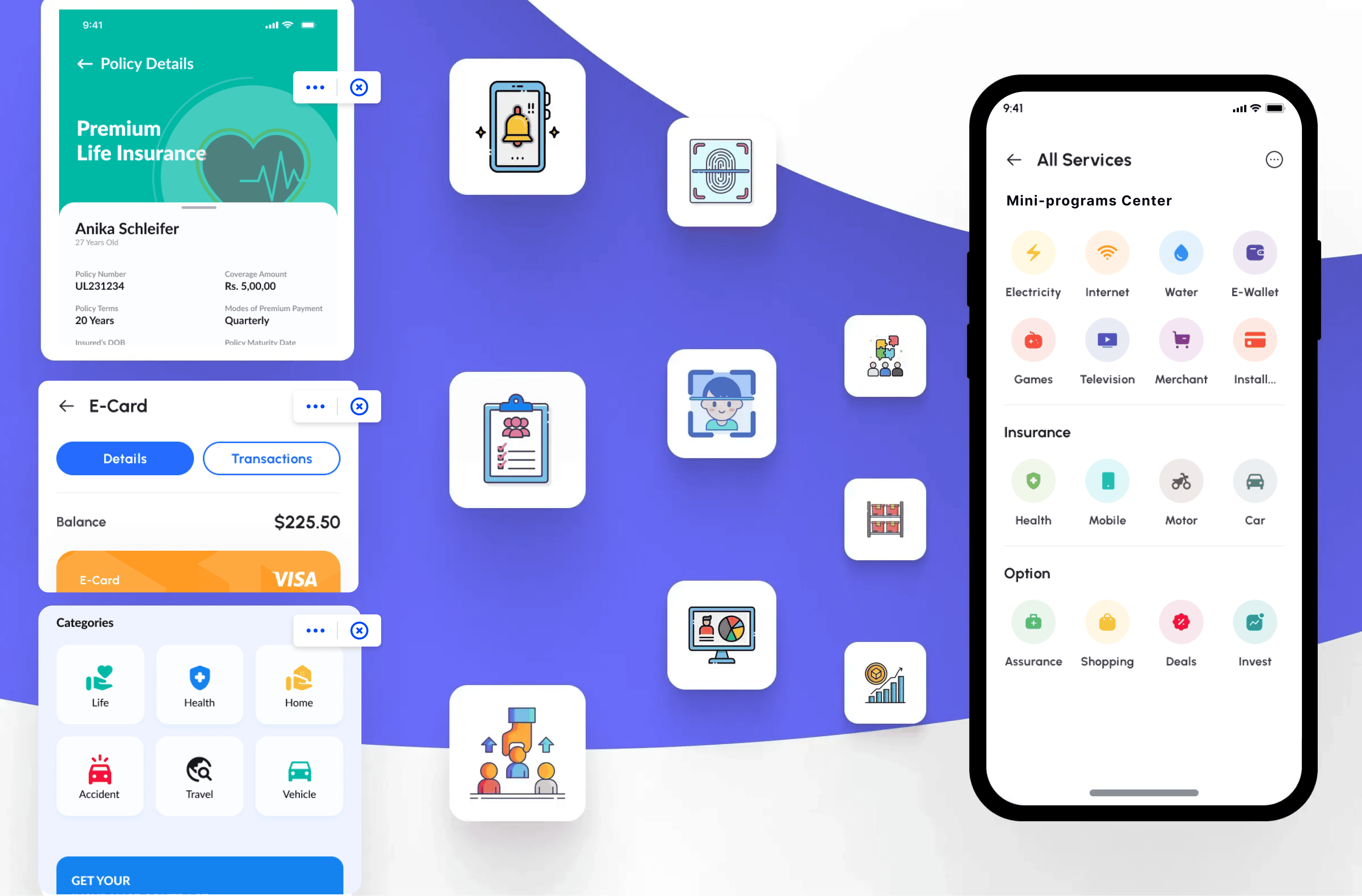Analysis of Social E-Commerce App Development
Over the past few years, the rise of social media has transformed our way of life. We have become accustomed to sharing our feelings, photos, and opinions with friends. At the same time, The online shopping landscape has transformed significantly. Instead of discovering products and then visiting a retailer's website, customers now use social media to connect the two steps. Social media platforms, where the average user spends two hours and 27 minutes daily, are bridging this gap. It has become clear that our social networks can be integrated into business, leading to the emergence of the concept of social e-commerce apps.
Social networks have evolved beyond photo-sharing to become shopping platforms. More than a quarter of people use social media to discover products, and 38% have made purchases directly through social media apps.
What is A Social E-commerce App?
Social e-commerce apps represent a modern e-commerce model that integrates social media platforms with online shopping. This model combines the broad user base and social interaction features of social media with the transaction management systems of e-commerce platforms. By merging social interactions, content marketing, and user services, these apps create a new shopping and sales environment that enhances the consumer experience and expands business opportunities.
Features of Social E-commerce App
Strong Social Attributes
Social e-commerce apps, built on social media platforms, inherently possess strong social attributes. Users can interact with friends, family, and other users during their shopping process, sharing their shopping experiences to enhance the reliability of purchase decisions. Merchants can use social media platforms to post product information, employ categories, keywords, and other methods to offer personalized recommendations, thereby increasing user engagement.Low Cost and High Efficiency
Social e-commerce connects suppliers and consumers directly through social media platforms, reducing intermediaries and logistics costs, making transactions more efficient. The viral nature of social media helps lower marketing expenses and increase sales conversion rates.Personalized Recommendations
Social e-commerce apps leverage big data technologies to store, process, and analyze vast amounts of data. Through natural language processing and machine learning algorithms, the app can perform tasks such as text segmentation and sentiment analysis to better understand user needs and shopping habits. Based on user behavior data, the app can offer personalized product recommendations, improving conversion rates and user satisfaction.Diverse Marketing Strategies
Social e-commerce apps support various marketing strategies, such as group buying, flash sales, and bargaining campaigns. Through social sharing and targeted marketing, these strategies provide merchants with more precise advertising effects and higher sales conversion rates.Real-Time Interaction and Online Customer Service
Social e-commerce apps can enable real-time interaction and online customer service. Merchants can activate online customer service features on product pages to offer instant communication, enhancing the shopping experience and customer loyalty.
Top Social E-commerce Apps in China
Social e-commerce in China has seen tremendous growth, blending social media and online shopping to create unique and engaging experiences. Here are some of the top social e-commerce apps in China:
1. Wechat
WeChat, primarily known as a leading messaging and social media app in China, has evolved into a powerful social e-commerce platform by integrating a suite of shopping features within its ecosystem. Through WeChat Mini Programs, users can access a myriad of online stores and services without leaving the app, while the "WeChat Stores" function allows brands to set up virtual storefronts directly within the platform. This seamless integration enables users to discover, share, and purchase products effortlessly, blending social interaction with a dynamic shopping experience. Additionally, WeChat’s extensive user base and advanced features facilitate personalized marketing and social commerce strategies, making it a cornerstone of China's digital retail landscape.

2. Red (Xiaohongshu)
Red (Xiaohongshu) stands out as a leading social e-commerce app in China, seamlessly merging social media with online shopping to create a vibrant and interactive platform. Users of Red can explore and share detailed product reviews, unboxings, and lifestyle content, which drives discovery and inspiration across a range of categories, from beauty and fashion to travel and wellness. By leveraging user-generated content and influencer endorsements, Red not only offers a rich source of authentic recommendations but also integrates direct shopping features that allow users to purchase products seamlessly within the app. This fusion of social engagement and e-commerce has positioned Red as a key player in shaping modern consumer behaviors and trends in China.

3. Douyin (TikTok's Chinese counterpart)
Douyin, the Chinese counterpart to TikTok, has revolutionized social e-commerce by harnessing the power of short-form video content to drive online sales. Through its dynamic platform, users can engage with entertaining and informative videos that feature product demonstrations, reviews, and influencer promotions. Douyin's integration of e-commerce features allows viewers to purchase showcased products directly within the app, streamlining the shopping experience and creating a seamless connection between content and commerce. This innovative approach capitalizes on the app's high engagement rates and viral potential, making it a prominent player in China's social e-commerce landscape and reshaping how consumers discover and buy products.

4. Weibo
Weibo, a major social media platform in China, has seamlessly integrated e-commerce features into its social networking framework. Although not a traditional e-commerce app, Weibo enables brands to promote products, interact with users, and drive sales through its social interaction tools and content marketing. Users can view product information and participate in promotions via e-commerce links shared on Weibo, enhancing their shopping experience. Additionally, Weibo’s real-time communication and robust data analytics tools help businesses engage with customers and optimize their marketing strategies, making it a significant player in the social e-commerce space.

Famous Social E-commerce Apps Worldwide
1. Instagram
Instagram, originally a platform for sharing images and videos, has transformed into a major social e-commerce force by integrating shopping features within its visually-focused environment. Its Shopping feature enables brands to curate product collections, offer detailed pages, and utilize in-app checkout, product tagging on images, videos, and ads, live shopping events, and notifications for product launches. Consumers can manage orders and track shipments via direct messages, with transactions facilitated through Meta Pay. As one of the world’s largest social media platforms, Instagram now engages over one-third of global social network users, and its U.S. user base reached 128.3 million in 2022. From its origins as a photo-sharing site, Instagram has pioneered the evolution of social media into a shopping channel, with features like Shops, livestreaming, and influencer collaborations driving 92% of online retailers to incorporate it into their social commerce strategies, outpacing competitors such as Facebook, Pinterest, and TikTok.

2. Facebook
Facebook, with its vast user base of nearly 3 billion monthly active users, has established itself as a leading social e-commerce platform by offering a range of tools for merchants to connect with online shoppers. Its Shops feature allows brands to set up branded storefronts where they can showcase, tag, and promote their products directly on the platform. Commerce Manager streamlines the management of product collections, enabling seamless integration and sharing across Facebook and Instagram. Additionally, Facebook Marketplace provides a peer-to-peer environment for buying and selling new and used goods, further enhancing the platform's e-commerce capabilities. Through these features, Facebook effectively blends social interaction with shopping, making it a pivotal player in the social commerce space.

3. Twitter
Twitter, renowned for its real-time updates and communications, is evolving into a significant player in social e-commerce by integrating a variety of shopping features. The platform's "Shop Module" allows brands to create storefronts showcasing up to 50 products directly on their profiles, making it easy for users to browse and engage without leaving the app. Additionally, Product Drops enable merchants to promote new item launches and connect with users effectively, while Twitter Live Shopping supports the creation of shoppable videos for live events, seamlessly integrating with merchant websites. By combining its extensive reach with these emerging e-commerce tools, Twitter is enhancing its role in social commerce, offering brands new ways to engage with consumers in a dynamic and interactive setting.

4. Pinterest
Pinterest, boasting 433 million monthly active users, has established itself as a leading social e-commerce platform by combining visual inspiration with seamless shopping experiences. Users can "pin" items to virtual boards, but the platform offers much more than mood boards—around 50% of Pinterest users actively use it for purchasing. Features like "Shop the Look" allow users to buy products directly from Pins showcasing fashion, home decor, and more, while visual search capabilities help them find and purchase similar items. With nine in ten users drawing inspiration from content shared within the app to guide future purchases, Pinterest effectively bridges the gap between discovery and buying, making it a pivotal tool in the social commerce landscape.

5. Youtube
YouTube, the world’s largest video-sharing platform, has increasingly embraced social e-commerce by integrating shopping features into its video content ecosystem. It allows creators and brands to showcase products within videos through shoppable ads and interactive links, enhancing viewer engagement and driving sales. Recently, YouTube expanded its e-commerce capabilities with live shopping features, enabling creators to tag products during live streams. A new partnership with Shopify further strengthens this integration, allowing creators and merchants to link Shopify stores to their YouTube channels and sync real-time inventory. With options for onsite checkout in the U.S., viewers can complete purchases without leaving YouTube, making it a dynamic hub where entertainment and shopping seamlessly intersect.

6. Tiktok
Since bursting onto the social media scene in 2016, TikTok has taken the digital world by storm, amassing nearly 85 million users who spend an average of 45 minutes per day on the platform, contributing to an annual spend of $50.4 million. It has swiftly become a major force in social e-commerce by integrating its vibrant short-form video content with innovative shopping features. TikTok enables brands and influencers to showcase products through engaging videos, with shoppable ads and live-streaming events facilitating direct purchases within the app. This seamless blend of dynamic content and e-commerce enhances product discovery and drives sales, positioning TikTok as a pivotal player in the evolving landscape of social commerce.

Future Trends in Social E-Commerce Apps
The future of social e-commerce apps is poised for transformative growth, driven by several key trends that will shape their development and user experience.
Strengthening Supply Chain Management: Social e-commerce platforms will increasingly focus on enhancing their supply chain relationships. By forging closer partnerships with suppliers, these platforms aim to improve product quality and delivery efficiency. This ensures that products reach consumers promptly, meeting their expectations for reliability and speed.
Enhancing User Experience and Service: To attract and retain more consumers, social e-commerce apps will prioritize the continuous improvement of product quality and service levels. This includes offering personalized recommendations and services, as well as establishing comprehensive after-sales support systems. By tailoring the shopping experience to individual preferences and needs, these platforms can foster greater customer satisfaction and loyalty.
Expanding into New Retail Sectors: Social e-commerce will explore new retail opportunities by integrating online and offline shopping experiences. This may involve collaborations with physical stores to offer consumers more choices and exclusive deals. Additionally, the use of augmented reality (AR) technology will provide more immersive try-on and trial experiences, bridging the gap between virtual and physical shopping environments.
FinClip: Transforming Social Apps into Social E-Commerce Super Apps
As digital platforms evolve, social apps face the challenge of staying relevant and competitive by integrating advanced e-commerce functionalities. FinClip offers a transformative solution to address these challenges and help social apps become powerful social e-commerce super apps.
One key challenge is the rapid integration of diverse digital services. FinClip's Mini-Program Management Platform simplifies this by allowing social apps to quickly incorporate third-party services and mature mini-program applications. This capability enhances user retention, provides targeted services, and enables effective traffic monetization, addressing the needs of both users and businesses.
Another critical aspect is delivering personalized content. FinClip’s mini-program grayscale release functionality allows for precise targeting of applications and marketing campaigns. This means businesses can tailor content to specific user segments, improving engagement and the relevance of promotional efforts.
Moreover, FinClip's technology supports the development of a loosely coupled super app architecture through its mini-program container technology. This approach modularizes app functionalities, allowing for dynamic updates and releases of business scenarios. By managing the full lifecycle of digital content, FinClip helps reduce development and maintenance costs while boosting operational efficiency.
In summary, FinClip equips social apps with the tools to seamlessly integrate services, deliver targeted content, and adopt a modular approach to app development. These advancements are essential for transforming social apps into comprehensive social e-commerce super apps, positioning them to excel in a competitive digital landscape.



